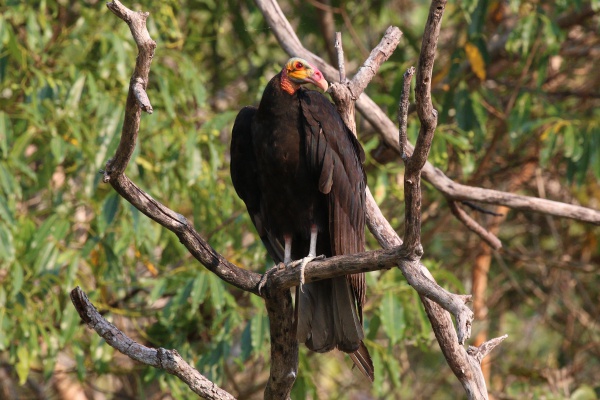Facts About Lesser yellow-headed vulture
The lesser yellow-headed vulture, also known as the savannah vulture, is a captivating bird from the New World vulture family, Cathartidae. Once believed to be the same species as the greater yellow-headed vulture, scientists distinguished them as separate species in 1964. These birds inhabit Mexico, Central America, and South America, particularly favoring grasslands, swamps, and degraded forests.
This vulture is quite large, featuring a wingspan of 150–165 cm. It boasts striking black feathers and a bald, pale orange head and neck. Unlike many birds, the lesser yellow-headed vulture has an extraordinary sense of smell, which it uses to locate carrion. Due to its relatively weak bill, it often relies on larger vultures to help tear into larger carcasses.
From a taxonomical perspective, the lesser yellow-headed vulture was first described in 1845 and may even have two subspecies. There is some debate regarding its precise classification, with some experts suggesting it is closely related to storks, while others place it in its own order, Cathartiformes. Notably, this vulture cannot produce many sounds as it lacks a syrinx, so it communicates through grunts and hisses.
In terms of appearance, the lesser yellow-headed vulture is smaller than its greater yellow-headed cousin. They also differ in plumage color, head shape, and flight patterns. These birds are predominantly found in lowland grasslands, swamps, and mangroves across Central and South America.
Ecologically, the lesser yellow-headed vulture is a solitary bird that flies low over wetlands, utilizing thermals to soar effortlessly. It employs a unique cooling method called urohidrosis, where it defecates on its legs. Its diet primarily consists of carrion, which it locates using its exceptional sense of smell. By consuming dead animals, this vulture plays a crucial role in cleaning the environment and preventing the spread of disease.
Regarding breeding, these vultures lay their eggs on various surfaces. The chicks are altricial, meaning they are helpless at birth and are fed through regurgitation by their parents. Fortunately, the population of the lesser yellow-headed vulture is stable, and it is classified as Least Concern by the IUCN.

 Bolivia
Bolivia